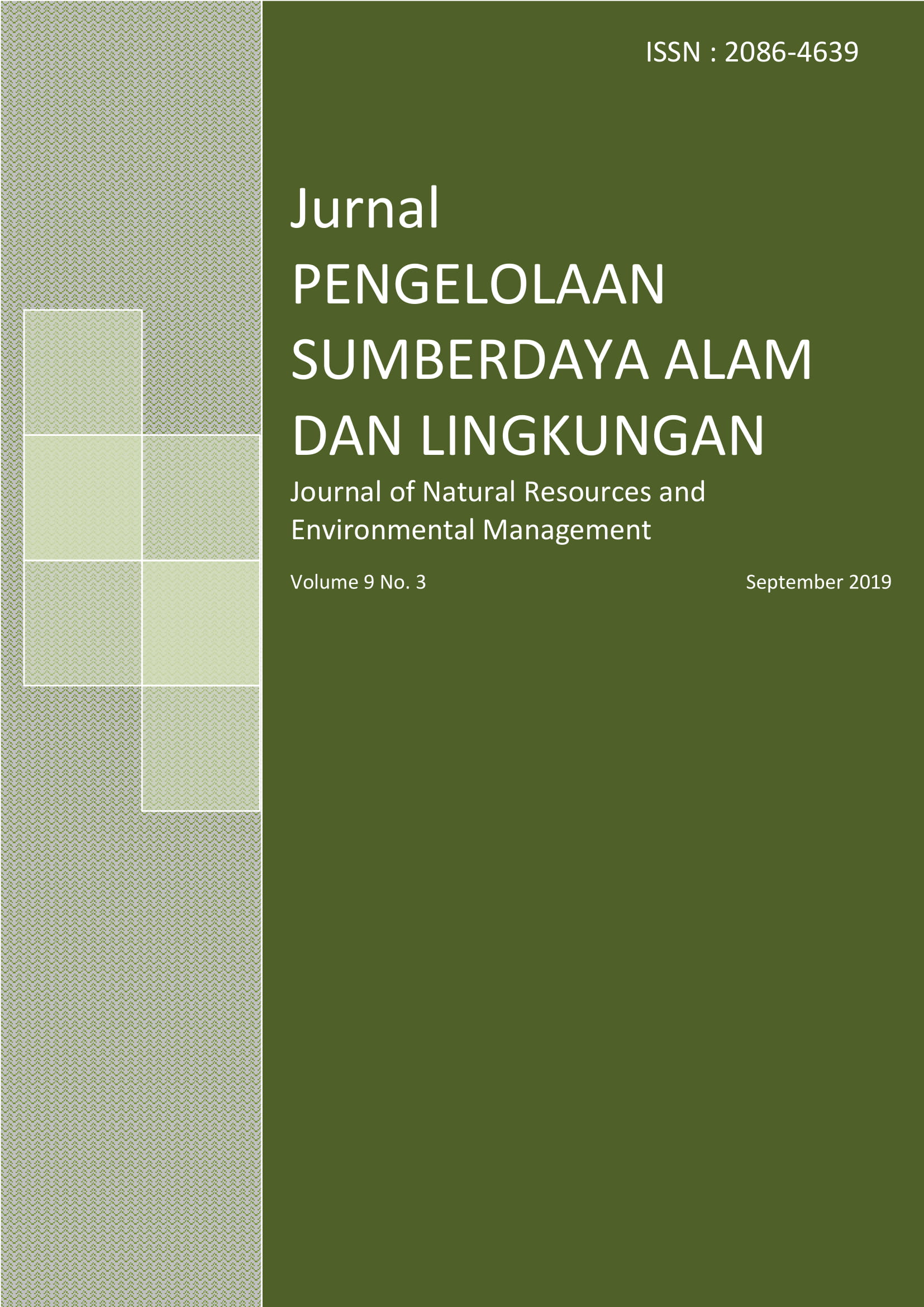Sustainability Status of Floating Net Cage Aquaculture (KJA) in Jatiluhur Reservoir, Purwakarta Regency
Abstract
The development of floating net cage aquaculture (KJA) in Jatiluhur Reservoir needs to pay attention to five dimensions of sustainable development (ecological, economic, socio-cultural, institutional and technological) to avoid problems arising from the KJA aquaculture activities, sustainable management is needed in order to optimize the benefits that can be obtained from KJA aquaculture activities. The purpose of this study was to analyze and assess the sustainability of KJA fisheries in the Jatiluhur Reservoir using the Rapid Apprisial Fisheries (RAPFISH) application with the MDS (Multi Dimensional Scaling) system approach. The results of the sustainability analysis of KJA aquaculture fisheries in Jatiluhur Reservoir showed quite sustainable with an index value of 51.33%, a stress value of 13.22% and a R2 value of 95.65%. Based on the leverage analysis to determine the most sensitive attributes as lever attributes that are used to improve the sustainability of KJA aquaculture, there are 8 key attributes as sensitive attributes including aquatic fertility, market ease, labor wages, space conflicts, business ownership, law enforcement, size selection and thinning, hatchery technology.
References
Abdulsyani, 2002. Sosiologi Skematika Teori dan Terapan. Bumi Aksara, Jakarta.
Alder J, T. J. Pitcher, D. Preikshot, K. Kaschner, B. Ferriss, 2000. How Good Is Good?: A rapid Appraisal Technique For Evaluation Of The Suistanibility Status Fisheries Of The North Atlantic. Methods For Assessing The Impact Of Fisheries On Marine Ecosystems Of The North Atlantic. Jurnal of Fisheries Centre Research Reports. 8 (2), pp. 195.
Aryani N, S. Henny, L. Iesje, R. Morina, 2004. Parasit dan Penyakit Ikan. UNAI Press, Pekanbaru.
Effendi H., 2003. Telaah Kualitas Air Bagi Pengelolaan Sumberdaya dan Lingkungan Perairan. Kanisius, Yogyakarta.
Effendi I., 2004. Pengantar Akuakultur. Penebar Swadaya, Jakarta
Fauzi A., S. Anna, 2005. Evaluasi Status Keberlanjutan Pembangunan Perikanan: Aplikasi Pendekatan Rapfish (Studi Kasus Perairan Pesisir DKI Jakarta). Jurnal Pesisir dan Lautan. 4 (3), pp. 14-21.
Harsono E., 2012. Model Numerikal 2-Dimensi Lapis Ganda Amonifikasi di Waduk Jatiluhur. Jurnal Oseanologi dan Limnologi di Indonesia. 38 (1), pp. 81-93.
Kodoatie R. J., 2005. Kajian Undang-Undang Sumberdaya Air, Andi. Yogyakarta.
Kartini T., P. Sulwan, 2016. Analisis Operasional Waduk Ir. H. Djuanda. Jurnal Konstruksi. 14(1), pp. 14–24.
Pitcher T. J., D. Preischot, 2001. RAPFISH: A Rapid Appraisal Technique to Evaluate Sustainability Status of Fisheries. Jurnal of Fisheries Research. 49, pp. 255-270.
Pitcher T. J., M. E. Lam, C. Ainsworth, A. Martindale, K. Nakamura, R. I. Perry, T. Ward, 2013. Improvements to Rapfish: a rapid evaluation technique for fisheries integrating ecological and human dimensions. Journal of Fish Biology. 83: 865-889.
Prianto, T. Z. Ulqodry, R. Aryawati, 2013. Pola Sebaran Konsentrasi Klorofil-a di Selat Bangka dengan Menggunakan Citra Aqua-Modis. Jurnal Maspari. 5 (1), pp. 22-23.
Riduwan, 2011. Dasar-dasar Statistika. Alfabeta, Bandung.
Widiyati, A., D. G. Bengen, 2012. Kajian Aspek Keberlanjutan pada Pengelolaan Perikanan Budidaya Keramba Jaring Apung di Waduk Cirata Jawa Barat. Jurnal Riset Akuakultur. 7 (1), pp. 121-129.
Wildemuth, B. M., 2009. Application of Social Research Methods to Question in Informan and Library Science. Grennwood Publishing Group, London.
Authors
Authors who publish with this journal agree to the following terms:
- Authors retain copyright and grant the journal right of first publication with the work simultaneously licensed under a Creative Commons Attribution License that allows others to share the work with an acknowledgement of the work's authorship and initial publication in this journal.
- Authors are able to enter into separate, additional contractual arrangements for the non-exclusive distribution of the journal's published version of the work (e.g., post it to an institutional repository or publish it in a book), with an acknowledgement of its initial publication in this journal.
- Authors are permitted and encouraged to post their work online (e.g., in institutional repositories or on their website) prior to and during the submission process, as it can lead to productive exchanges, as well as earlier and greater citation of published work (See The Effect of Open Access).






